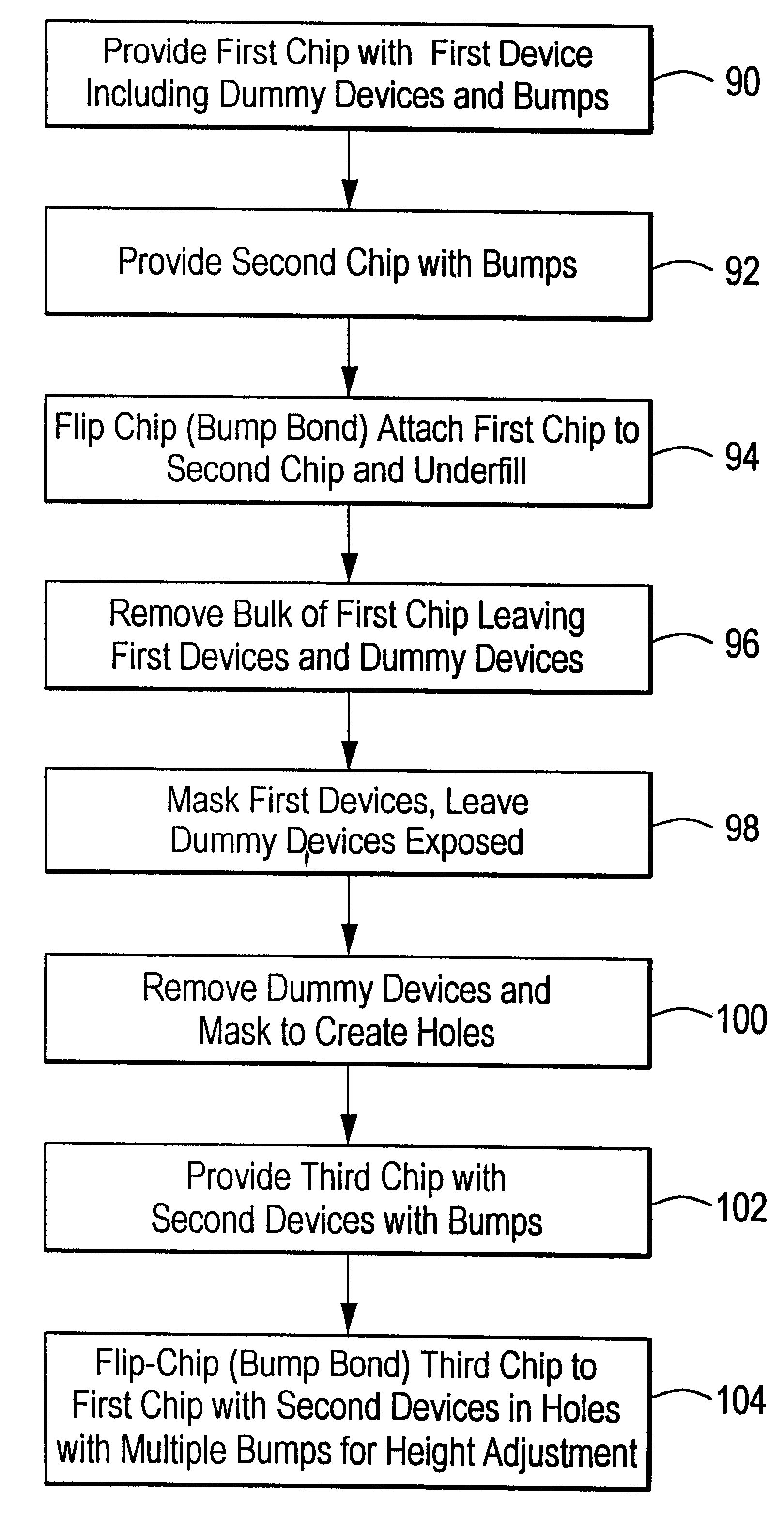Method of equalizing device heights on a chip
a technology chips, applied in the field of equalizing device heights on chips, can solve the problems of limited success in growing epitaxial layers of iii-v materials that do support light emission, ineconomical feasibility of two such dissimilar devices, and problems such as the integration of optoelectronic devices with silicon
- Summary
- Abstract
- Description
- Claims
- Application Information
AI Technical Summary
Benefits of technology
Problems solved by technology
Method used
Image
Examples
Embodiment Construction
There is shown in FIG. 1 a first chip 10 including a gallium arsenide (GaAs) substrate on which has been grown a number of devices 14. These devices include a number of real, active devices 14a as well as dummy devices 14b. The real devices may be any type of device usable on an integrated circuit. The dummy devices may be simply more of the real devices which are to be sacrificed or other devices that are convenient to make or simply blanks or anything else which can reserve the space for future use. In this particular embodiment they are preferably photonic devices. More particularly they may be emitters or detectors and in this specific embodiment, the devices are vertical cavity surface emitting lasers (VCSELs). The VCSELs 14a and the dummies 14b which are also VSCELs are all grown together on the gallium arsenide substrate 12. The dummy devices 14b here are identical to the real devices 14a because they have all been grown together. This is for convenience only and the dummy de...
PUM
 Login to View More
Login to View More Abstract
Description
Claims
Application Information
 Login to View More
Login to View More - R&D
- Intellectual Property
- Life Sciences
- Materials
- Tech Scout
- Unparalleled Data Quality
- Higher Quality Content
- 60% Fewer Hallucinations
Browse by: Latest US Patents, China's latest patents, Technical Efficacy Thesaurus, Application Domain, Technology Topic, Popular Technical Reports.
© 2025 PatSnap. All rights reserved.Legal|Privacy policy|Modern Slavery Act Transparency Statement|Sitemap|About US| Contact US: help@patsnap.com



